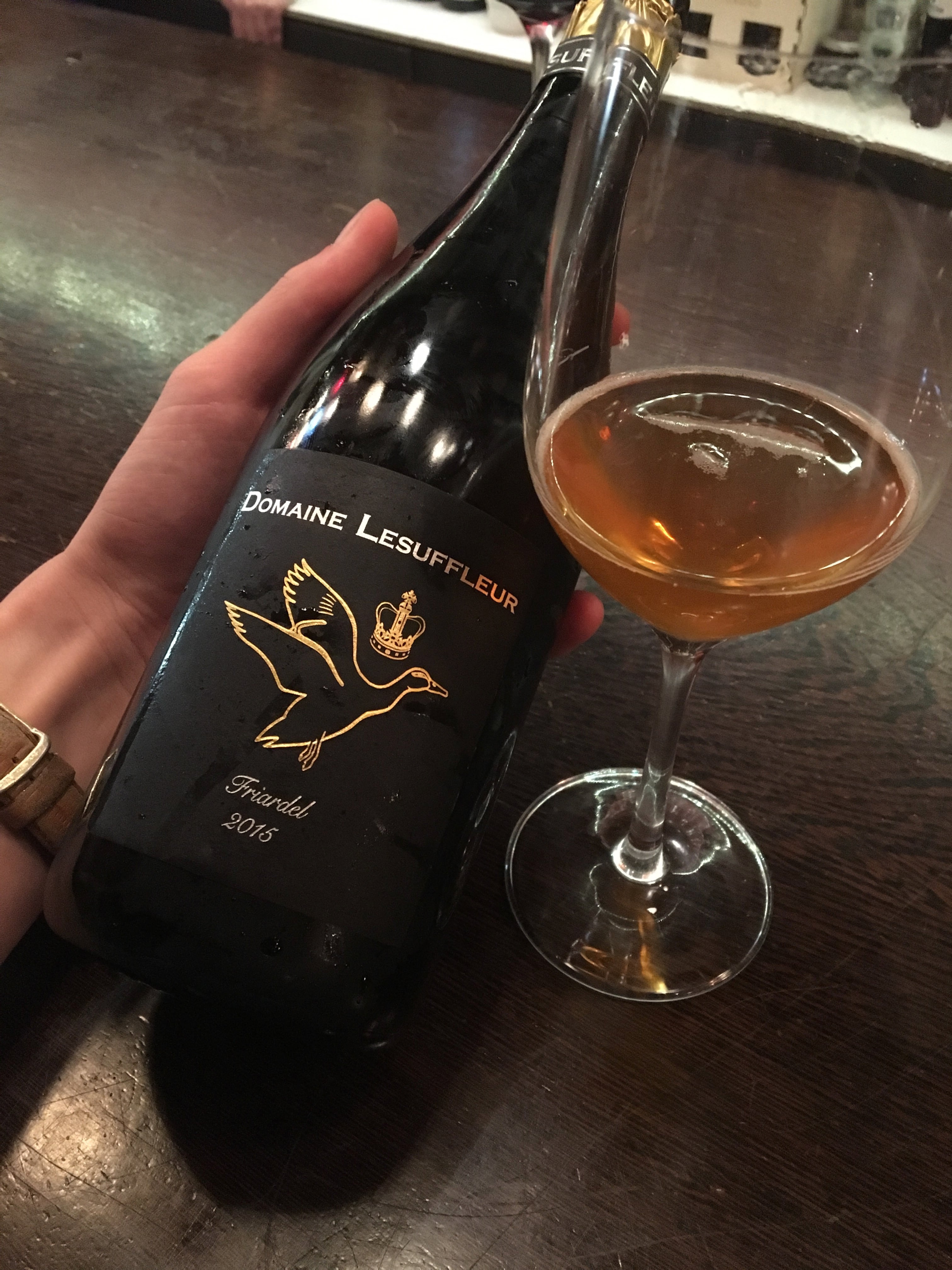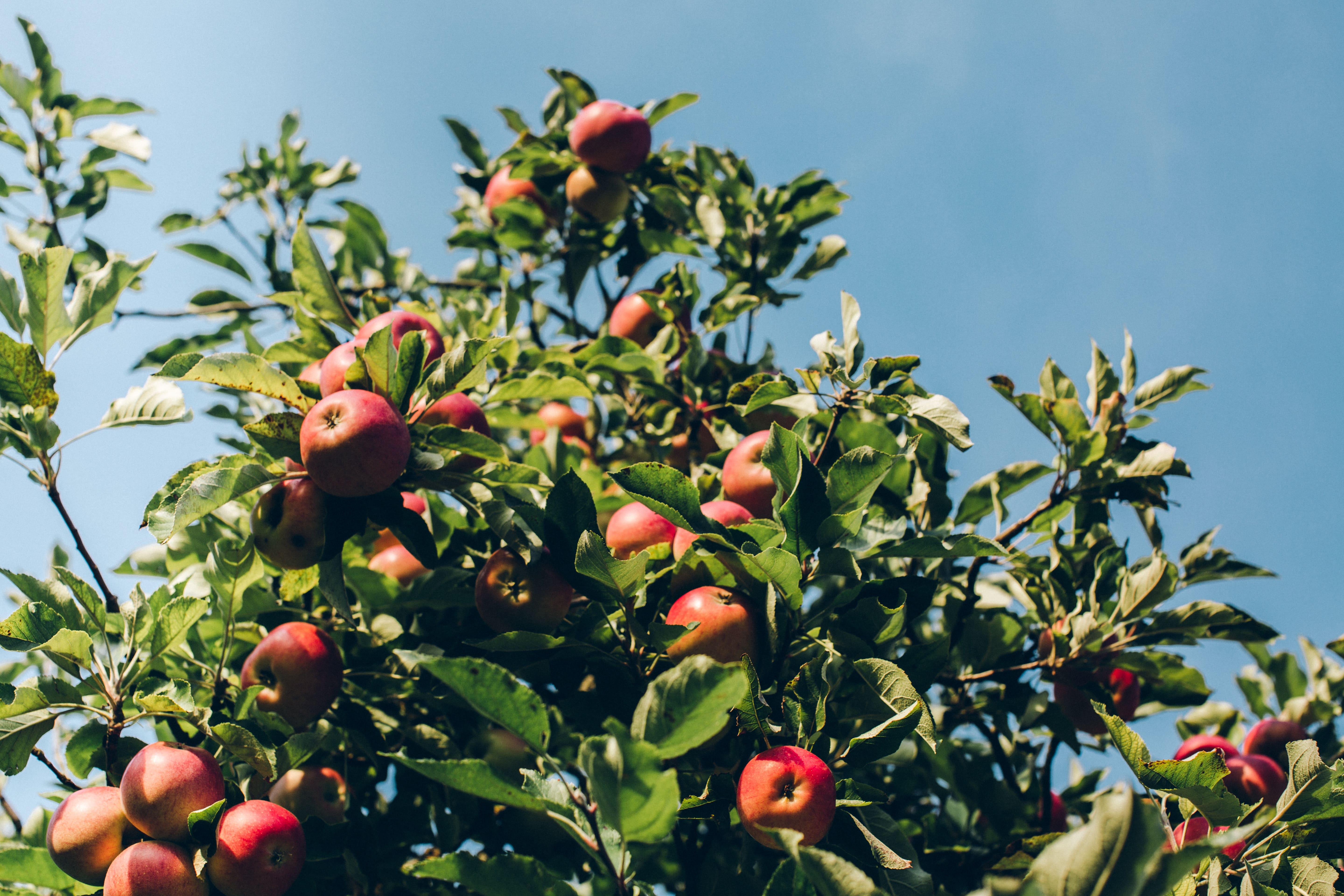This time around, we wont be telling you about grapes but turning towards the subject of apples. Indeed, as we are getting ready to welcome the twelfth night pancake to the table for the feast of the Epiphany, we mustn’t forget its traditional partner: cider. This sweet drink is often underrated, partly due to the low-end, massively produced versions of it we encounter. What we are getting at in this article is rather the fruit of aged artisanal techniques and savoir faire.
Cider has had an eventful and unique history. For a long time, in France, it has been a common and renowned beverage. In fact, its popularity increased considerably after the Phylloxera epidemic hit the country’s vineyards. However, cider’s century long ascent reached its peak in 1914 before declining sharply due to the two world wars, which had a harsh impact on Normandy, Maine and Britany to a lesser extent. Thankfully, in more recent years, cider has made a comeback and many wine cellars are beginning to recommend and sell some. It is the perfect opportunity to bring cider back to the table and enjoy a bottle with friends and family!
Let us take you through cider’s origins and making process as we uncover the secrets to its production.
I – How and where is cider made in France
As you will have figured out, cider is made from apples, but not just any apple. Indeed, there are about 400 varieties of apples in France today, which can be classified into one of three categories according to their flavour profile: Sweet apples, sour apples and bittersweet apples. From here, producers can assemble apples from different categories or stick to a single one.

Apple trees distinguish themselves in that they only produce fruit every other year, that is if they are not tampered with in a chemical process. Contrary to the practice for grapes, harvest is conducted once the fruit has fallen and apples are picked up from the ground. This is typically done between September and December.
Once the apples have been harvested, they are stored in a warehouse where they continue to develop all their aromas and flavours. They are then washed and crushed so as to later extract the juice. But before the crushed apples are pressed for juice, they are exposed for a few hours in vats away from the open air. Then, just like grapes in wine making, the apples are pressed and the juice collected.
The high levels of sugar in the apples will cause the juice to ferment very quickly. The juice is promptly pumped into a tank, often in a dry and cool environment. Once the process of fermentation has come to an end, the juice is once again pumped out and unwanted particles are filtered out. This is when the alcoholic fermentation begins: again similarly to winemaking, yeasts will consume the sugar present and release alcohol and carbon dioxide in its stead.
Opting for a long and slow fermenting process will result in a high quality cider, which explains why certain AOCs require a minimum duration for the process.
Once it has fermented and the required amount of alcohol is reached, the cider is bottled at last. The fermentation within the bottle is slowed down so that the cider may the be kept for years.
II – Food and cider pairings
You will have heard of the typical pairing of the moment: cider with the Twelfth night cake (called cake of the three wise men in France: a buttery pastry stuffed with frangipani) a truly delightful match. But cider can be had with a number of other dishes, thanks to its powerful flavours which allow many types of pairings.
You could go for the regional pairing of the terroir by serving cider with a classic Camembert from Normandy. The acidity and freshness of a good cider will offset the creamy texture of the cheese and the two will go together beautifully. In this case we recommend going for a traditional style of cider.
The beverage could also be selected to accompany white meat or shellfish based dishes. Indeed, cider is often used in beef recipes or to craft sauces. Alternatively, cider – especially medium dry cider – is a good choice for sweet-and-savoury dishes, or cheese made from ewe’s milk. Raw cider boasts high levels of acidity and can also be served with soft and pressed cheese, or be had as an appetiser.


III – Welcome to cider-land
This article wouldn’t be very helpful if it didn’t explain the different types of cider and appellations in order to give you a clear picture. The categories of cider are determined based on the level of alcohol they contain. These categories are:
- Sweet Cider (doux) which does not ferment too long. Alcohol level must be below 3%
- Semi-dry cider (demi-sec), between 3.5% and 4.5%
- Raw cider (Brut), which ferments longer and alcohol content is higher (between 4% and 5 %)
- Traditional cider is the name given to ciders with alcohol content higher that 5%, quite like an extreme version of raw cider.
After many years of studying boundaries and product specifications since the 1980s, cider producers were finally granted their first AOCs (appellations) in 1996: Pays d’Auge and Cornouaille. Ciders from these regions must satisfy certain requirements, which guarantee a minimum level of quality, paired with the expertise of the producer making the cider.
It was only in 2016 that Cotentin also obtained its own cider appellation, since product specifications took much longer to gain approval.
We strongly recommend that you make the trip to Normandy or Britany to discover their wonderful ciders. It’s a shame that this delectable beverage has lost in popularity in the past years because of the market of mass produced average ciders, even though skilled producers are still crafting exceptional bottles that deserve to be kept and enjoyed. Some of these producers we can recommend are Lesuffleur and Lemasson in the Cotentin. In order to discover the region and the pleasures it has in store, why not take a day to follow the cider trail, peppered with castles, horse farms and manor houses …
If you’re interested in a day trip, don’t hesitate to look at offers from mywinedays !

The whole team of the guide Le Décanté wish you the best for year to come. We hope it will provide you great discoveries and moments of sharing.



0 Comments